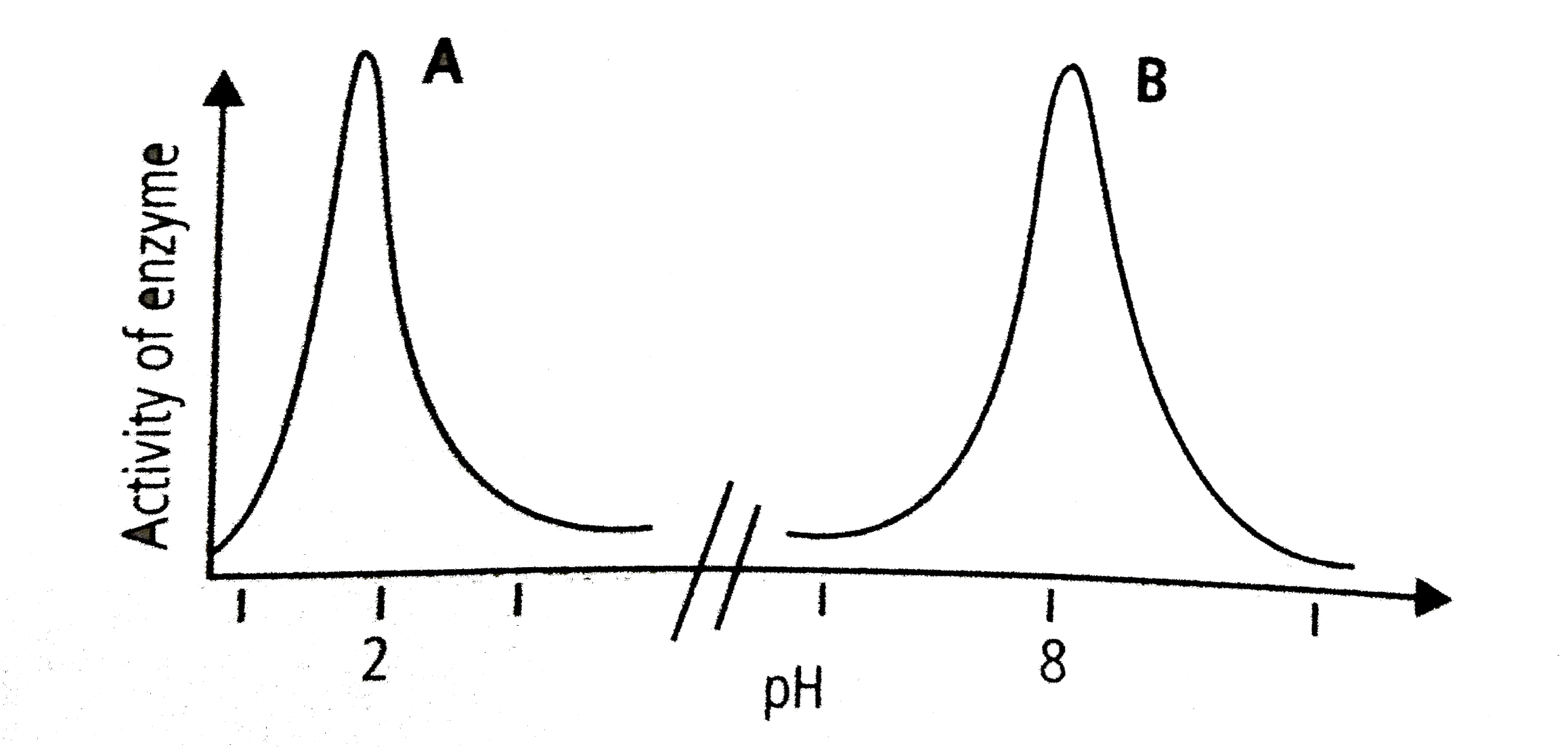Chemically, enzymes are
(a) fats
(b) Carbohydrates
(c) hydrocarbons
(d) Proteins
The correct Answer is:D
Step-by-Step Solution:
1. Understanding Enzymes: Enzymes are biological catalysts that speed up chemical reactions in living organisms. They are crucial for various metabolic processes.
2. Chemical Composition: Enzymes are primarily composed of proteins. This means that their structure and function are derived from amino acids, which are the building blocks of proteins.
3. Structure of Enzymes: Enzymes have a specific three-dimensional structure that includes an active site. The active site is the region where substrates bind, and it is highly specific to the substrate it acts upon.
4. Specificity of Enzymes: The specificity of enzymes can be explained by the "lock and key" model, where the enzyme (lock) is specific to its substrate (key). Only the correct substrate can fit into the active site of the enzyme.
5. Conclusion: Since enzymes are made up of proteins, the correct answer to the question "Chemically, enzymes are" is that they are proteins.
Final Answer: Enzymes are chemically proteins.
---
Topper's Solved these Questions
- BIOMOLECULESBOOK - CENGAGE BIOLOGY ENGLISHCHAPTER - BIOMOLECULESEXERCISE - ASSERTION-REASONING QUESTIONS
18 Videos
- BIOMOLECULESBOOK - CENGAGE BIOLOGY ENGLISHCHAPTER - BIOMOLECULESEXERCISE - ARCHIVES
26 Videos
- ANIMAL KINGDOMBOOK - CENGAGE BIOLOGY ENGLISHCHAPTER - ANIMAL KINGDOMEXERCISE - Archives
34 Videos
- BREATHING AND EXCHANGE OF GASES BOOK - CENGAGE BIOLOGY ENGLISHCHAPTER - BREATHING AND EXCHANGE OF GASES EXERCISE - Archives
15 Videos
Similar Questions
Knowledge Check
Assertion: DNA segments can be excised by 'molecular scissors' or 'chemical scalpels' that biotechnologists call restriction enzymes
Reason: Restriction enzymes are synthesised by microbes as a defence mechanism and are specific endonucleases which can cleave double-stranded DNA.AIf both Assertion and Reason are true and the Reason is the correct explanation of the Assertion.BIf both Assertion and Reason are true and the Reason is not the correct explanation of the Assertion.CIf Assertion is true but the Reason is false.DIf both Assertion and Reason are false.Consider the following steps involved in nodule formation in the root of a legume.
(i). Bacteria release chemicals and enzymes.
(ii). Bacteria stop dividing and form bacteroides.
(iii). Roots secrete chemical atractants.
(iv). Formation of infection thread.
(v). Formation of nodules.
(v). Formation of nodulues.
(vi). Division of infected cortical cells.
(vii) Curlinig of root hair and degradation of their cell wall.
(viii). Infection thread grows along with multiplication of bacteria.
Arrange the steps in the right sequence and mark the correct optionA(iii).(i),(vii),(iv),(viii),(vi),(v),(ii)B(iii),(iv),(viii),(i),(vi),(vii),(ii),(v)C(i),(iv),(iii),(vi),(v),(vii),(viii),(ii)D(i),(iii),(vi),(iv),(viii),(ii),(v),(vii)An enzyme acts by
Aincreasing activation energyBlowering activation energyCincreasing the temperatureDinitiating a reaction
Inducible enzymes are
View SolutionRestriction enzymes are
View SolutionThose enzymes which are active inside a cell are called extra-cellular enzymes.
Enzymes lower the rate of biological activities.
View SolutionWrite the chemical reaction catalysed by the zinc enzyme carbonic anhydrase.
View SolutionA and B in the given graph are the action spectra of the two enzymes. The two enzymes are

View Solution
